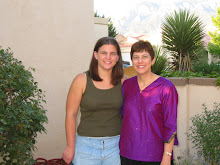
The age of visual literacy, once called telecommunications, has been well underway for over 50 years. By the 1970's, many children in America were spending far more time each day watching television than any other single activity. This passive existence does not seem to have resulted in an enlightened era. The TV has bombarded children with images that often have appealed more to the lower brain than the higher one.
To provide a curriculum in school that lead to critical viewing is already long overdue. Courses in film have been reserved for university coeds with a special interest in media while adults use television as a sedative for active, curious children. The curriculum suggested by the New Mexico Media Literacy Project mirrors that of the ESL department. The listening and speaking components are well served by the inclusion of media in the classroom. Critical thinking and the language to express these ideas easily translate in written expression.
To interact with this media form provides children with a welcome opportunity to move the movie viewer from a passive spectator to a creative producer. Although creating film is becoming easier, the technology still can be time-consuming and frustrating to use. This, above all, gives the teacher pause for consideration. One must ask if the learning that takes place warrants the time spent. My ventures into digital stories and movie making with the students turned out to be long roads. The goal is to make the process smooth and efficient. Perhaps to begin with a snapshot and build up to the movie just as we have done in this class makes the most sense.
Photograph: "Televisión escolar" by Lord Jerome, http://creativecommons.org/licenses/by-nc/2.0/deed.en and http://www.flickr.com/photos/lordjerome/127381557


No comments:
Post a Comment